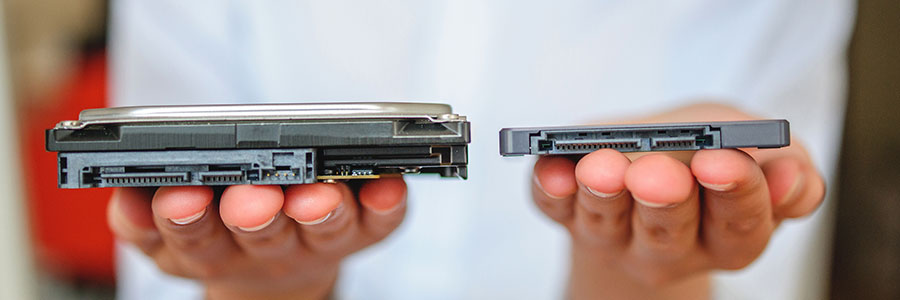 Intel has released a totally new type of hard drive designed for faster boot times and storage. People in the market for a new hard drive may consider this technology, but before making any big investments, you need to know the full capabilities of Optane SSD. Below is our review of Intel’s newest storage device.
Intel has released a totally new type of hard drive designed for faster boot times and storage. People in the market for a new hard drive may consider this technology, but before making any big investments, you need to know the full capabilities of Optane SSD. Below is our review of Intel’s newest storage device.
Optane SSD
Intel’s new standalone drive maximizes storage performance and can also serve as extra RAM for your servers. The Optane SSD DV P4800X has 375 GB of space, a data read latency of 10 microseconds, and data transfer rates (or throughput) of 2GB per second. With these specs, Intel claims users will experience faster boot times, quicker application load times, and 30% faster system performance.
All of this makes the Optane SSD perfect for hosting machine learning and analytics. Also, if your company is involved in high-performance computing, Intel’s new RAM/storage drive should be high on your company’s wish list.
Optane SSD, however, may not be the best for everyone. First of all, the latest storage drive is meant for servers. Another downside is that the 375-GB SSD is a hefty $1,520 — almost as much as deploying your own in-house server would cost! In this case, you would probably get more value out of a conventional SSD.
SSD
Consumer-level SSDs still provide fast software boot times, but will probably offer less storage space and throughput rates than the Optane SSD. This really isn’t much of a sacrifice, considering that plenty of users can afford and work with 128 GB of ‘normal’ SSD storage. In fact, a 128-GB SSD can go for as low as $50.
HDD
Your other choice would be the standard hard disk drive (HDD). Though these storage devices are far more common and much less expensive than the previous two, HDDs are slow to boot, noisy, and susceptible to hardware damage and data loss. The only thing going for the traditional hard drive is its storage capacity. For $50 dollars, users can buy a 1-TB hard disk drive.
Although HDD may not be ideal in terms of speed, it’s a good choice for any business on a tight budget. Most people actually pair SSD with their standard HDD to get the best of both worlds. Operating systems and critical applications can be stored in SSD for faster boot times, while regular files can be stored in HDD.
Even with this crash course on hard drives and SSDs, you will still probably need a storage professional to help you pick the best device for your business. For all your storage drive queries, installment requirements, and IT maintenance needs, contact our IT consultants today.
